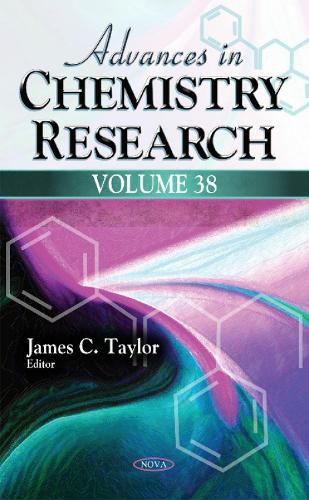Readings Newsletter
Become a Readings Member to make your shopping experience even easier.
Sign in or sign up for free!
You’re not far away from qualifying for FREE standard shipping within Australia
You’ve qualified for FREE standard shipping within Australia
The cart is loading…






Chapter One is focused onto particular groups of hazardous materials (pesticides and dyes) and systematisation of degradation methods according to specified pollutant. The authors investigated the materials with the best performance taking into account catalytic activity, stability and ease of preparation toward the electrochemical behavior of the dyes and pesticides as well as their degradation choosing the proper electrochemical method and conditions. Chapter Two covers a bio-supported, inexpensive and easily available cellulose sulfuric acid that has been used as a catalyst to promote sequential two-step one-pot reactions to synthesise more than twenty derivatives of nitrocoumarins (n-nitro-2H-1-benzopyran-2-one). Chapter Three summarises the recent developments in synthetic methodologies for the construction of 1,4-benzothiazine derivatives. Mechanistic investigations, reactivities, applications, product manipulations and biological potential are also been discussed. In Chapter Four, the authors present the different approaches for studying cellular adhesion and subsequent migration using a toolbox of linear and star-shaped PEG-based materials. Chapter Five compiles and presents the summaries of visible light mediated synthesis and functionalisation of pyrrole and its derivatives. Several review articles and book chapters present the conventional procedures for synthesis of pyrrole and its derivatives, but the visible light mediated synthesis of these components have not yet been archived. Clathrate hydrates (CHs) are inclusion compounds in which tetrahedrally-bonded H2O molecules form a generally disordered but solid-state host-lattice composed of a periodic array of cages. Chapter Six addresses the catalytic formation kinetics of CHs with H-bonding non-classical guests as studied by infrared spectroscopy. Chapter Seven summarises data as well as ab-initio- band-structure calculations in order to provide guidelines for further development in the field of Clathrate type I crystals. To conclude the book, Chapter Eight covers the current research status on the potential toxicological effects of Aloe vera.
$9.00 standard shipping within Australia
FREE standard shipping within Australia for orders over $100.00
Express & International shipping calculated at checkout
Chapter One is focused onto particular groups of hazardous materials (pesticides and dyes) and systematisation of degradation methods according to specified pollutant. The authors investigated the materials with the best performance taking into account catalytic activity, stability and ease of preparation toward the electrochemical behavior of the dyes and pesticides as well as their degradation choosing the proper electrochemical method and conditions. Chapter Two covers a bio-supported, inexpensive and easily available cellulose sulfuric acid that has been used as a catalyst to promote sequential two-step one-pot reactions to synthesise more than twenty derivatives of nitrocoumarins (n-nitro-2H-1-benzopyran-2-one). Chapter Three summarises the recent developments in synthetic methodologies for the construction of 1,4-benzothiazine derivatives. Mechanistic investigations, reactivities, applications, product manipulations and biological potential are also been discussed. In Chapter Four, the authors present the different approaches for studying cellular adhesion and subsequent migration using a toolbox of linear and star-shaped PEG-based materials. Chapter Five compiles and presents the summaries of visible light mediated synthesis and functionalisation of pyrrole and its derivatives. Several review articles and book chapters present the conventional procedures for synthesis of pyrrole and its derivatives, but the visible light mediated synthesis of these components have not yet been archived. Clathrate hydrates (CHs) are inclusion compounds in which tetrahedrally-bonded H2O molecules form a generally disordered but solid-state host-lattice composed of a periodic array of cages. Chapter Six addresses the catalytic formation kinetics of CHs with H-bonding non-classical guests as studied by infrared spectroscopy. Chapter Seven summarises data as well as ab-initio- band-structure calculations in order to provide guidelines for further development in the field of Clathrate type I crystals. To conclude the book, Chapter Eight covers the current research status on the potential toxicological effects of Aloe vera.